Fans are becoming more and more captivated to the fascinating diversity seen in Betta fish due to the species’ recent rise in popularity in the aquarium community. One noteworthy feature of this trend is the appearance of 8 Different Types of Female Betta Fish, which exhibit a wide range of colors and fin patterns that are comparable to those of their male counterparts.
This article delves into the fascinating world of these eight distinct varieties, highlighting the advantages and allure they provide aquarium enthusiasts.
About Female Betta Fish
Siamese fighting fish, or betta fish, have long been fascinating and an important component of the aquarium community. These fish have made a name for themselves in the hearts of aquarium aficionados all across the world thanks to their striking colors, graceful fins, and endearing personality. Nonetheless, the general consensus in the community is frequently focused on the colorful appearance and assertive demeanor of the male bettas—often referred to as the “colorful ones.”
The male bettas are usually the center of attention because of their eye-catching colors and long, flowing tails. Their reputation as the mesmerizing show stoppers of aquariums is partly due to their territorial behavior and propensity to fight fiercely with other males. Because of this misconception, their female counterparts—whose special traits and attributes are usually disregarded—have unintentionally been overshadowed.
Despite the widespread misconception that all bettas are made equal, female bettas have unique characteristics that make them just as fascinating on their own. Although they might not have the vivid hues and showy fins of their male counterparts, female bettas exhibit a subdued grace and elegance.
Furthermore, female bettas are more tolerant of cohabiting with other fish due to their communal character. Female bettas can frequently flourish in community tanks, which creates a distinct and more peaceful dynamic within the aquarium, in contrast to the territorial instincts of male bettas.
Different variations of Female Betta Fish
Female Betta Fish are gorgeous, vibrant, and anything but dull! Photographed by its breeder, Daniella Vereeken, this collection showcases a variety of colored female bettas.
The acronyms used in the fish names are listed below in alphabetical order:
CTPK stands for Crowntail Plakat.
HM refers to Half Moon.
BF is for butterfly
PK = Plakat, HMPK = Half Moon Plakat
HMPK Turquoise Female
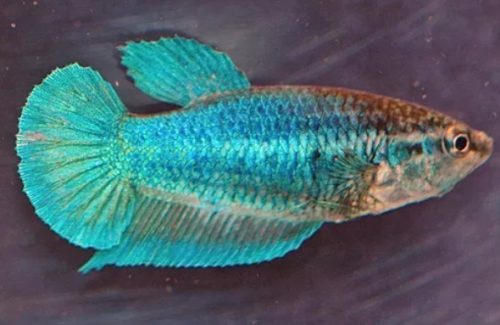
The half-moon plakat is characterized by its half-moon-shaped tail and shorter fins than other plakat varieties. When these characteristics come together, the result is a fish with an elaborate, partially flowing tail that can nevertheless zip around in the water.
HMPK Marble Female
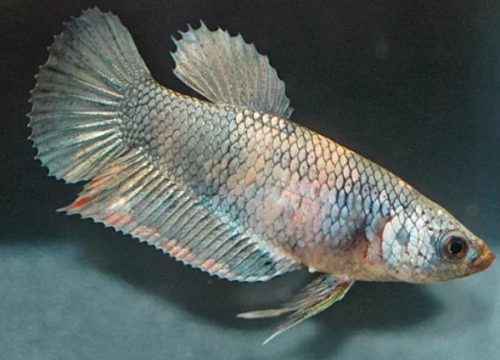
The characteristic shorter fins of the typical plakat betta, along with the tail of the half moon, are displayed by this silvery half moon plakat. HMPKs are offered as both male and female characters and come in a variety of colors. Pet owners like these and other plakats because of their relative durability among betta kinds.
HMPK Copper Female
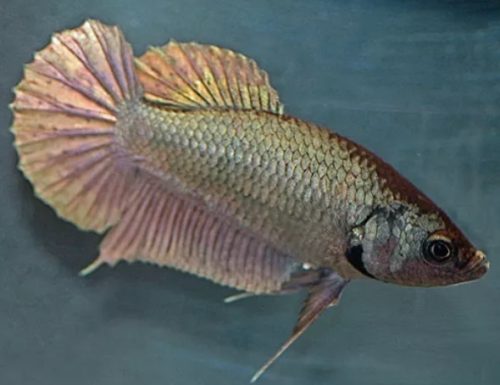
The scales of this half-moon plakat betta have a coppery luster. All in all, this female betta’s metallic shine displays every hue of the rainbow in delicate gradations.
HM Red Dragon Female
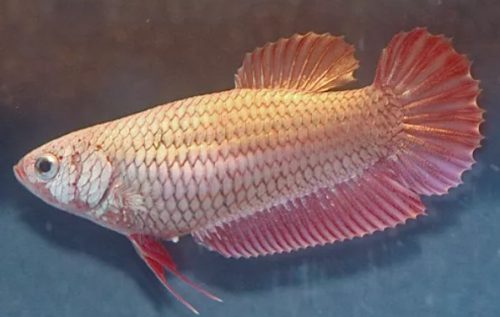
American breeder Peter Goettner created the half moon bettas. This kind is slightly more difficult to breed than the plakat, although it is not as hostile. Male half moons are bred for larger, more expansive tails with a flowing form. The female has a more traditional tail that is shaped like a half moon.
Traditional PK Yellow Dragon Female
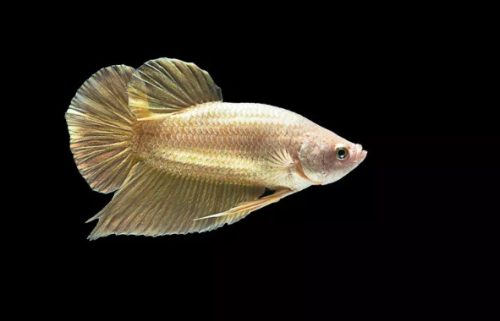
This female yellow dragon plakat is a typical one. The name plakat originates from the Thai word plakad, meaning “fighting fish.” Shorter-finned betta fish variations are also included in the phrase.
This variety is sometimes called a short-finned fighter because of its shorter fins. These fish are in fact bred to fight in several regions of the world. This species’ males have gill beards that fall down below the chin, and they are larger and thicker overall. Women are smaller and slimmer and lack this characteristic.
Traditional PK Red Dragon Female
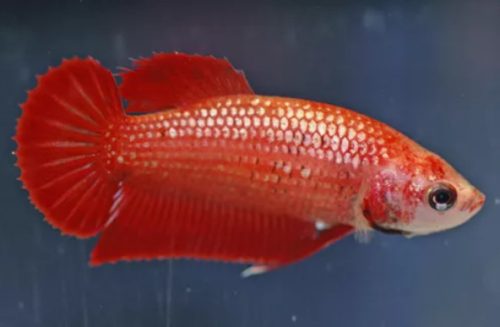
The color of this plakat betta is vivid red. Because they aren’t constrained by excessively flowing fins, many plakats are more energetic than bettas with lengthy fins. Because of its high level of illness resistance, this kind is highly prized by betta enthusiasts and pet owners.
HM Red BF Female

Its vividly colored red half-moon butterfly betta is easily identified as a butterfly thanks to its characteristic color bands on its tail and fins. The darkest tint on this red female starts at the base of her tail and fins and continues until it reaches the borders, when it reaches a band of silvery white.
CTPK Multicolor Female
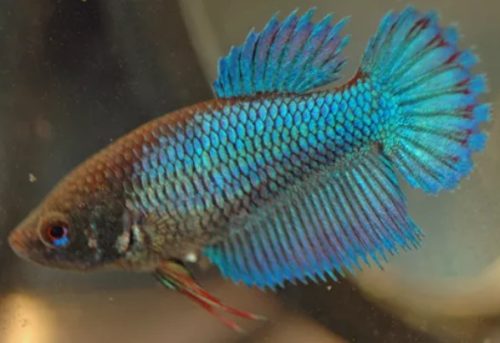
The fin rays that give the tail the shape of a crown and extend past the fin membrane are what give the crowntail plakat its name. It is also occasionally referred to as a fringetail. Although this kind of plakat has fewer fins than the regular plakat, it nevertheless has the usual crown-shaped tail. Full crowntails have longer fins and tails.
Origin of Betta Fish
Betta fish, renowned for their vibrant colors and unique personalities, trace their origins to the rich aquatic landscapes of Thailand, Malaysia, and Cambodia. In their native habitat, bettas thrive in the shallow waters, rice paddies, and slow-moving streams, adapting to the diverse environments of Southeast Asia. Understanding the roots of these captivating fish enhances our appreciation for their natural behaviors and characteristics.
In the wild, bettas have evolved intricate survival mechanisms, adapting to the often challenging conditions of their native waters. The labyrinth organ, a distinctive feature of bettas, allows them to breathe atmospheric oxygen, enabling them to survive in oxygen-deprived environments, such as stagnant pools and puddles. This adaptation has played a crucial role in their ability to thrive in diverse ecosystems across Southeast Asia.
The evolution of bettas in captivity has further contributed to the captivating array of colors and fin shapes that enthusiasts admire today. While the captive versions share a distant relation to their Southeast Asian ancestors, selective breeding has led to the development of various color morphs and fin types. This breeding process, spanning generations, has given rise to the mesmerizing diversity of betta fish found in aquariums worldwide.
Conclusion
The information demonstrates how popular and diverse Betta fish have become as a pastime in tank keeping. Betta lovers now have more options than ever thanks to an expanding range of color and fin variants. A new aspect to the hobby is the appearance of colorful fish, especially the vivid coloring of female Bettas that is on par with that of males. One noteworthy benefit is that female Bettas can be kept in an aquarium together, which is an interesting alternative to males, who usually need separate housing to prevent fights. In addition to adding to the aesthetic appeal of maintaining Betta fish, this trend offers hobbyists creative options for group settings in their tanks.
People Who Read This Also Read:






